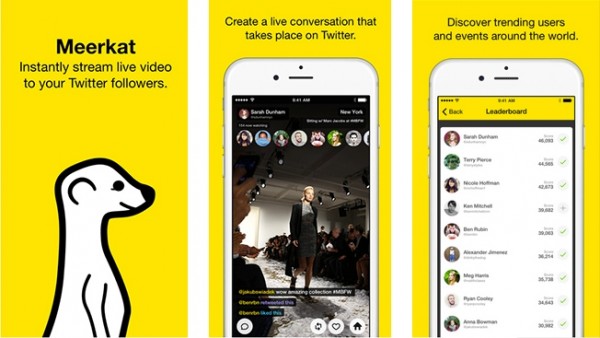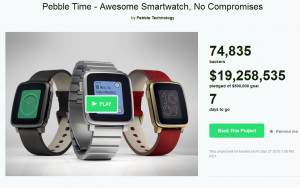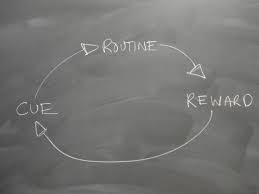The public relations and social media landscapes are constantly changing and, sometimes, it’s hard to keep up. One way to help stay up-to-date with new techniques and tools is by learning from bright public relations and social media professionals around you. I recently attended a YVR PR Roundtable – a casual meet up group for public relations (PR) pros in Vancouver – and the crew introduced some interesting PR and social media tools that are worth sharing. Although there are many more uses for each tool listed below, I wanted to give an example of how each tool could be used in a PR campaign.
Social Mention
o What it does: aggregates user generated content from across the web into a single stream of information.
o Useful for: when a crisis happens it’s great for tracking sentiment, and getting a good snapshot of what’s being said.
Muck Rack
o What it does: Muck Rack’s mission is to make journalists, PR pros and marketers more successful by connecting them through its platform.
o Useful for: finding and pitching the right journalist.
Meerkat & Periscope
o What they do: live-stream video through Twitter. Meerkat was all anyone could talk about at SXSW this year!
o What’s the difference: although they are very similar apps, Meerkat was first on the scene, while Periscope is owned by Twitter.
o Useful for: raising the profiles of thought-leaders and CEO’s. For example, Hootsuite recently used Periscope to live-stream an AMA (Ask Me Anything Session) with Ryan Homes.

Coverage Book
o What it does: grabs coverage, crunches all the data and designs an impactful showcase that best presents a client’s brand.
o Useful for: curating earned media hits, and handing a beautiful, client-ready report.
Product Hunt
o What it does: curates the best new products on one website; the most popular products are positioned at the top of the site.
o Useful for: gaining momentum for product launches.

These are just a few of the many PR and social media tools on the market today that help communications pros garner top tier results for their company and clients. To keep up with the latest PR and social media trends, connect with YVR PR on Facebook and Twitter.
Tags: Vancouver media relations, Vancouver PR, Vancouver public relations, Vancouver social media
Bell Media CEO Kevin Crull has to go. Wendy Freeman, president of CTV News, must go too.
How can viewers of Canada’s largest private broadcaster have confidence in this news source when the owner dictates how news is covered and the head of news allowed it fearing for her job? In an unprecedented statement from Canada’s broadcast regulator, the CEO of Bell Media which owns CTV was lambasted for meddling in news coverage.
Crull has apologized for interfering in CTV’s coverage of the Canadian Radio-Television and Telecommunications Commission’s decision to allow less expensive cable and satellite TV ‘pick and pay’ options which could impact Bell Media’s bottom line.
An obviously enraged Crull banned CRTC chairman Jean-Pierre Blais from all CTV news coverage after he saw him interviewed on Bell-owned BNN, a business television channel.
Fearing for the loss of her job, CTV News chief Wendy Freeman caved in and allowed the manipulation until more ballsy news people in her organization gathered ranks and put Blais on the late news. But Freeman’s waffling and giving up editorial control under pressure let down all those who work in CTV newsrooms across the country.
Real reporters put their jobs on the line when told how to cover news or to leave out elements that balance coverage. They push back harder when their own management tries to influence what should be fair and objective news coverage for commercial interests.
Crull’s weak mea culpa explanation of how he was merely suggesting coverage that showed the impact of the CRTC decision, apparently without the CRTC chairman’s input, is not enough.
Enlightened Canadians will wonder what other news stories have been ‘shaped’ by CTV’s ownership. What credibility does CTV News have now?
Years ago, I was one of three reporters who strongly protested a decision by the television station president who blocked coverage of a lawsuit launched by disgruntled contestants of a game show produced there.
We told him this could never happen again and pointed out the damage that could be done to the station’s reputation as well as our professional reputations. To my knowledge, there was no further meddling.
That was immediate action with a strong statement to maintain independence and objectivity in reporting news. Bell Media and CTV also have to make the strongest statement possible to regain and retain credibility. That can only be done with the removal of those who don’t uphold these principles.
Tags: Bell Media, Canada, CTV, news coverage, newsroom, reporters, telecommunications
Until recently, my experience with Kickstarter was fairly limited—I loosely understood it as a fundraising platform for companies or projects. So when one of my for-profit clients announced they were launching a new product via a Kickstarter campaign, and needed extensive PR support to get more “backers” (campaign supporters who donate funds in exchange for a product or service) to reach their fundraising goal, I knew I had my work cut out for me. 
In a nutshell, Kickstarter was developed to help creative projects flourish among target audiences—it is a low-risk channel that connects early adopters and innovators by introducing new products or services online at a discounted price. The concept is comparable to a commercial version of online dating—matchmaking in commerce. Typically campaigns last for 30 days and all financial proceeds collected during this time are used to help the company cover innovation costs and the expense of bringing the product or service to market.
While Kickstarter was a novelty that received extensive publicity when it launched in 2009, it is now ubiquitous. Rising above the chatter to deliver a topline Kickstarter campaign can be a difficult task that requires a well-thought out marketing and publicity strategy. Product websites, ad buys, news releases, case studies, video, social media, bloggers, events and direct marketing executed before, during and after a campaign are all excellent promotional tactics that increase exposure.
However, I quickly learned one of the most invaluable tactics, that has consistently achieved the best results in campaigns, is word-of-mouth support from your backers and brand supporters. Getting your backers to endorse, rate and review your product or service will always produce more authentic public content than you can generate internally.

Furthermore, if the media—i.e. influential bloggers and well-known outlets (such as The Huffington Post, Forbes, Fast Company, Mashable)—see that the general public is buzzing over your campaign, they will listen and are more likely to mention you in their next blog or article. Don’t underestimate the power social media, word of mouth and the loyalty of brand fanatics. While marketing your campaign is both important and necessary, taking your Kickstarter campaign to the next level requires looking outside the walls of your company for support.
 Take Pebble Technology’s most recent Kickstarter campaign for its new Pebble Time smartwatch. The company has raised $$19,256,637—3,851% of its $500,000 Kickstarter goal—with seven days of the campaign still to go. While Pebble benefits from previous experience with Kickstarter, much of the campaign success is due to the company’s large social media following, word of mouth and ongoing media attention.
Take Pebble Technology’s most recent Kickstarter campaign for its new Pebble Time smartwatch. The company has raised $$19,256,637—3,851% of its $500,000 Kickstarter goal—with seven days of the campaign still to go. While Pebble benefits from previous experience with Kickstarter, much of the campaign success is due to the company’s large social media following, word of mouth and ongoing media attention.
Here are a few basic tips that I learned from my experience. I hope they prove useful for those of you preparing to launch a Kickstarter campaign of your own:
- Be sure there is a genuine interest for your product or service, and a real need for external funding
- Communicate with your customers before you launch your campaign, and maintain consistent communications with backers and customers during and after the campaign—do not lose contact with them simply because they have pledged for your campaign
- Ask your backers to talk about your product or service among their networks
- Remain active on your social media accounts and be sure to post consistent updates to your website and Kickstarter webpage
- Proactively identify and reach out to select media and bloggers that have a specific interest in your product or service area
- Be consistent, transparent and genuine—continue to post updates and communicate with your backers and the media well-after the campaign is completed. You never know when you will launch your next Kickstarter campaign and the ongoing exposure is vital for the success of your company.
Many of the writers and bloggers I spoke with were interested in publishing a follow-up piece on the successes and learnings from the campaign. All publicity is good publicity, after all! So you didn’t get the results you were after? My advice: reach out to your media contacts and backers anyway to tell them what you were happy with, and what you would change next time. This shows your humility and willingness to learn, and will help generate support for your next Kickstarter campaign before it’s even been conceived.

Interested in learning more about Kickstarter? Here are a couple of useful articles that may help get you started:
Tags: bloggers, branding, Communications strategy, crowdfunding, endorsements, fundraising, Kickstarter, Pebble Time, Public relations, publicity
In this final post of our leadership series, we outline what Art of Leadership speaker Charles Duhigg discussed in relation to the power of habit. In particular, he explored how leadership can improve and change habits.
Duhigg informed the room that, according to recent research he’d seen, 45% of what we do is habit. He explained the habit loop, emphasizing the importance of reward in forming habits.

What I found interesting was his take on unplanned organizational habits. He illustrated this point by talking about how we operate in the workplace daily, often without even realizing what we’re doing and how we’re behaving. For example, we operate in silos or we stick to our own job descriptions and won’t interfere with others. He highlighted this by talking about the Kings Cross fire in London which killed 31 people and injured 100. From what I understood, Duhigg was suggesting that, if London Underground employees hadn’t stuck to their job descriptions and silos, the fire may have been prevented from spreading.
Obviously there are always a lot of factors to consider in these kinds of situations but, talking us through the steps and habits of how the employees responded, certainly confirmed his theory. Ultimately, unplanned organizational habits prevented anyone from taking crucial action.
So how do we change habits? Again, it’s a big topic and one that I cannot do justice to in a short blog post. But I would add:
- Will power is key
- Recognize that habits spill into all areas of life; identify those you truly want to change
- Identify what provides you with an opportunity for change
- Find habits that deliver emotional rewards
Hopefully this leadership series has given you some thoughts, tips and tricks to apply to your workplace environment, teams and individual development. The key to success and growth is keeping things simple and realistic. So be sure to identify what you believe will work for you and focus on a selection of these points. And don’t be afraid to have check-ins with yourself and others. Documenting progress, getting feedback, and being open to change will ultimately allow you to become a more successful leader.
Tags: employee communications, leadership, organization, Public relations, teamwork, thought leadership
To follow-on from last week’s blog post exploring leadership qualities and approaches in more detail, I wanted to share key Art of Leadership takeaways from five-time Olympic medalist, Hayley Wickenheiser. Hayley gave an inspiring and entertaining talk which had everyone in the audience captivated. In particular, it was a good reminder that great leaders can be found everywhere – not just in the corporate world.
Hayley’s tips included:
- It’s important to differentiate between your role and yourself
- Keep perspective in check – be present
- Lead from the front – show your team the way
- Lead from behind – step out of the way
- Do the best job you can
- Have the courage to step ahead of fear
- Find the courage to stick to the plan
- Celebrate the small successes as well as the big wins
- Find unity in adversity
- Enjoy the ride!
Although short and sweet, a lot of Hayley’s points came from her experience training with her team and then becoming the team captain. I think any of these tips can be applied to the corporate world and are just as valid as some of the more corporate-based suggestions that may delve deeper into strategy and relationships. Often, keeping things real and keeping things simple are what will really be effective and have a genuine impact on people.
Tags: employee communications, leadership, perspective, thought leadership
This past Wednesday marked 12 incredible years of Peak Communicators. It was great gathering with our friends in the media and past, present and potential clients to celebrate with a sparkling wine tasting, live music and lots of delicious food!
If you weren’t able to join us for all of the festivities the other night, check out these photos collected from “#Peak12” for a taste of the fun.
Thank you to all who attended – support like yours has been what has helped our company flourish for over a decade. We can’t wait to see what the next 12 years has in store!






Tags: anniversary, event planning, media relations, Public relations, team
For those regulars on the Peak blog, you’ll recall that, towards the end of last year, we shared some tips from the Art of Leadership conference.
There were a lot of key takeaways that day so here are a few more to consider when looking at how you can be a more effective and inspirational leader (or start working towards becoming one).
Overall, some of the main points that stood out to me included:
- Leadership is about values and behaviour
- It’s about having the right set of goals that everyone is aware of
- Collaboration is a key leadership quality
- Positivity goes a long way
At one point, the conference host remarked, “True leadership happens when you’re not in the room.” That struck a chord with me as so often we feel like we have to be extremely involved with a process or team in order to achieve the desired outcomes. This statement challenges that concept. True leadership essentially should make everyone a leader.
We’ve previously shared what Dan Roam (The Back of the Napkin) and ex-NYC Mayor, Rudy Giuliani had to say about great leadership.
Dr. Vince Molinaro of Knightsbridge Human Capital Solutions was also one of the conference speakers. Dr. Molinaro emphasised the important of getting the best out of people, of leadership accountability, and the skill of being able to connect strategy and leadership.
He brought his approach down to four key terms that leaders need to sign up to – in what he called “The Leadership Contract”:
- Decisions: Define who you are as a leader. Be deliberate in your decision making. Differentiate between you as a person and you as a leader.
- Obligation: As a leader, you have to step-up. It’s your job to make things better. What’s your leadership legacy? You want to ensure you leave a company in a better and sustainable state for the future. Position your company for success.
- Get tough! As a leader, you still have to tackle the hard work. Ensure you have regular check-ins with yourself and question whether you’re wimping out on anything you shouldn’t be. Make those tough decisions and have candid conversations.
- Connect! Ultimately you’re leading a community. Who has got your back? Clarity breeds commitment.
It’s easy to listen to the theory. But, in order to grow as leaders, we need to look at how we can realistically apply some of these theories to our day-to-day work. Something as simple as creating a checklist or assessing more challenging situations and how you approached them can be a really effective way of continual learning. And don’t be afraid to seek feedback from your colleagues. It’s the best way to learn.
Tags: communication, employee communications, human resources, leadership













